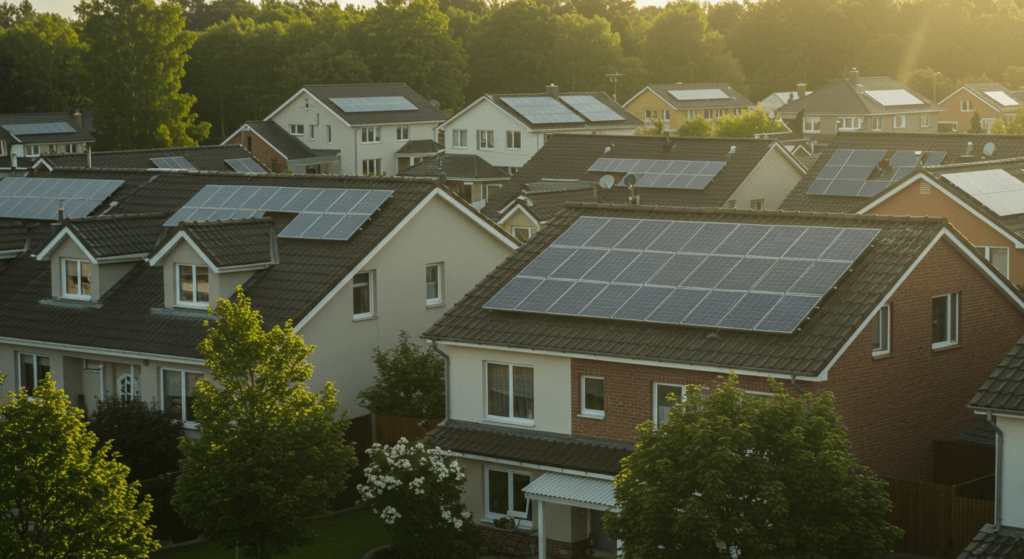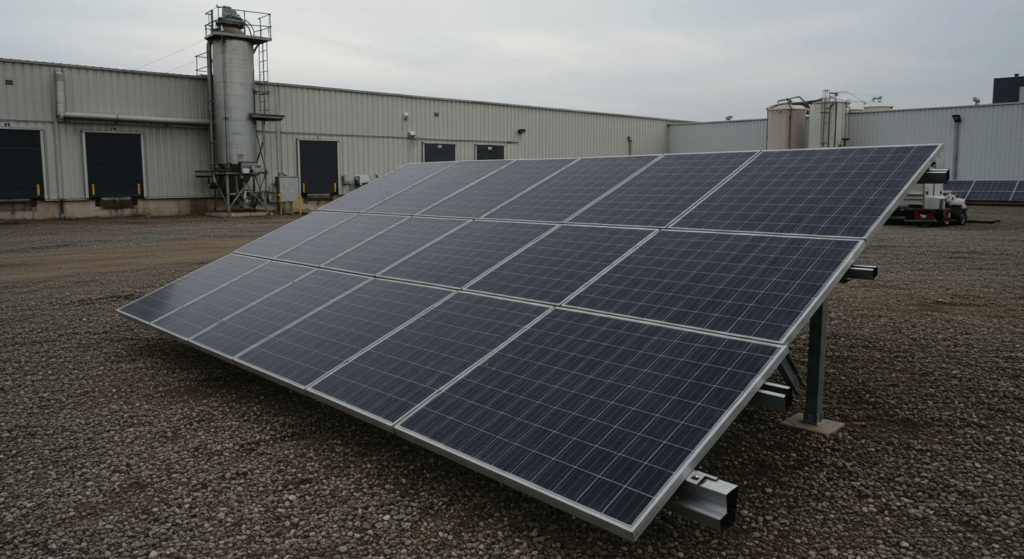Solar panels – do I need planning permission?
With the cost of energy ever rising, people are asking ‘do I need planning permission for solar panels?’ In many cases the answer is no. You do not need planning permission for solar panels. You can erect them both for residential and commercial use. This is covered under four different permitted development rights. See below for a summary of each.
Residential Solar
Part 14 of the GPDO covers solar energy. Class A allows for solar panels to be erected on residential properties subject to a few conditions. The most important factor is that you must keep the solar photovoltaic (pv) or better known as a solar panels or indeed solar roof tiles within 20cm of the wall or slope of the roof. Yes, you can install them on a wall if you want. Check out Class A for any other conditions and the full legislation.
The only time you can’t install them on a wall is in a conservation area or world heritage site and that wall faces a highway. But any other installation in a conservation area is acceptable and doesn’t need for any planning permission.
The only time that you coud not go ahead is an Article 4 or a planning restriction blocked you – which is unlikely on solar panels.
This was extended in December 2023 under SI 2023/1279 to allow for solar panels on flat roofs to protrude by up to 0.6m above the highest part of the flat roof, excluding chimneys.
If you wish to erect them as a stand-alone and not on the property itself, you can also do this under Class B. Again there are certain limitations to restrict the size and height. This must not exceed more than 4m in height or within 5m of a boundary. The total surface of the panels must not exceed 9 sq m and no dimension must exceed 3m in height width or depth. More information on Class B can be found here including the full legislation.
Commercial Solar
If you are looking to install solar equipment on a commercial property you can do this under Class J. Again there are a few restrictions such as the solar equipment must not be higher than 0.2m if on a sloping roof or 1m above the highest point on a flat roof nor within 1m of the edge of said roof. You can’t install on a listed building or a scheduled monument. If the building is in a conservations area, AONB etc., the solar equipment must not be erected on a roof slope facing a highway. Check out Class J for any other restrictions and the legislation.
This was extended in December 2023 under SI 2023/1279 to allow for solar panels on flat roofs to protrude by up to 0.6m above the highest part of the flat roof, excluding chimneys.
As with residential, you can also have stand-alone solar equipment for commercial properties. This is limited to a maximum of 4 meters high and not within 5 meters of the boundary. It can’t be installed in the curtilage of a listed building or scheduled monument. If on land within a conservation area, AONB, the Broads etc., it can’t be between the building an a highway.
The surface area of the stand-alone solar equipment can’t be in excess of 9 square metres, nor can any dimension exceed 3 metres.
Check out Class K for more information and the full legislation.
You can also now install solar canopies in commercial off-street parking under Class OA. This was introduced in December 2023.
Conservation Areas
You can install solar panels or solar tiles in Conservation areas. You will not be able to install them on a wall facing a highway if residential, but you can on a roof facing a highway. For commercial buildings, you can’t install on a roof or wall facing a highway.
More Information
See the relevant sections within Planning Geek:
Class A – Solar equipment on domestic premises
Class B – Stand-alone solar equipment on domestic premises
Class J – Solar equipment on non-domestic premises
Class K – Stand-alone solar equipment on non-domestic premises
Or for all permitted development rights for renewable energy see Part 14.
Reach out and book a Zoom session if you need further help or clarification.
Page Updated: 7th December 2023
Other Common Projects
Many more projects to come....

